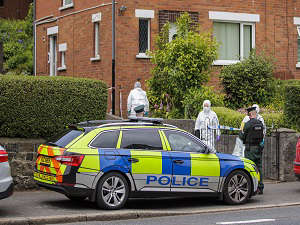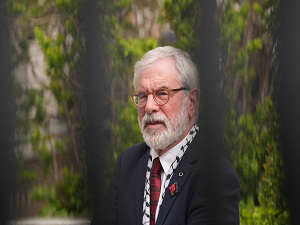
By Michael McHugh
A researcher has invented a low-cost telecommunication system using drones which provides early warning on natural disasters and acts as a WiFi hotspot when phone signal is disrupted during extreme weather.
Last year saw 850 natural catastrophes, Queen's University Belfast researchers behind the development said.
In response, Dr Trung Duong has pioneered a system providing improved battery life and better durability.
Dr Duong said: "The research could make a real difference to people living in areas exposed to extreme weather and it will certainly make the work of emergency services much easier."
He said warning systems for natural disasters like earthquakes or hurricanes were very expensive, not always effective and often easily damaged.
Dr Duong has developed a low cost telecommunication system using drones that can fly over large surface areas, taking real-time measurements and providing information about weather conditions.
It is known as a "Catastrophe-Tolerant Telecommunications Network" (CTTN) and is critical to emergency missions such as rescue teams and emergency medical services.
Amateur drones can last for around 30 minutes when flying over a large area, but Dr Duong's system will last three-to-five times longer than this and is not as expensive as a professional drone.
The academic said: "Currently in Vietnam, monitoring stations are placed alongside the river which cover a small area.
"Twenty five of these stations would take around six months to build and cost nearly £0.5 million.
"They only last four years but if extreme weather strikes, they are almost always damaged as they are so close to the water."
He added: "An added complication is that when a natural disaster hits, people in the affected communities find it very difficult to communicate with emergency services and their families as phone signal and WiFi is often disrupted due to the weather and also because so many people are using the system at one time."
The researcher is a reader in the School of Electronics, Electrical Engineering and Computer Science and conducts research at the Institute of Electronics, Communications and Information Technology at Queen's University.
To prolong the battery life of the drones, Dr Duong developed a mechanism for allocating resources across the system in real-time, which maximised the system's energy efficiency.
Dr Duong said: "The battery life of a drone often does not last long and those that can last up to 30 minutes are very expensive.
"Our challenge was to create an inexpensive wireless system employing drones that could be flown over a large surface area for a longer period of time but also with extra capacity in providing early warnings and wireless connectivity in the aftermath of disaster.
"It should also help to save money, the CTTN is much more durable than the current river stations and is 100 times cheaper."
The system has already been adopted by disaster management authorities in Vietnam.


 Police launch murder probe after death of woman in north Belfast
Police launch murder probe after death of woman in north Belfast
 BBC granted time to consider appeal in Gerry Adams case before paying all costs
BBC granted time to consider appeal in Gerry Adams case before paying all costs
 Man, 54, dies in Co Londonderry crash
Man, 54, dies in Co Londonderry crash